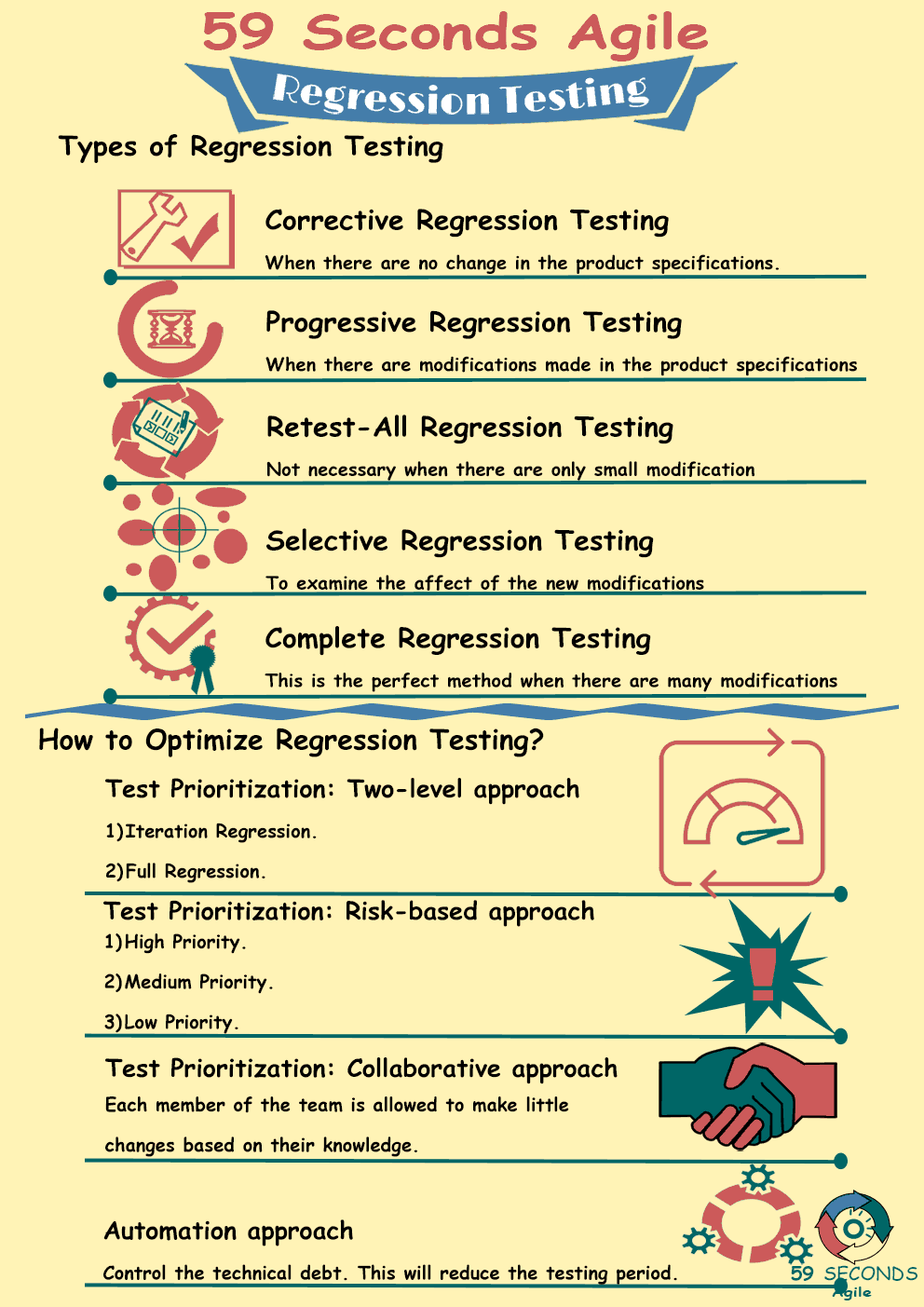
Regression Testing for Scrum Masters
In companies using agile development, it is common to introduce changes in a product incrementally. Along with the new changes, unexpected issues may arise, testing whether the existing functionality is broken or not becomes very important. Sustaining the quality of the product besides the additional changes can be attained with regression testing.
Regression Testing is a technique used to make sure that bugs that are introduced to the system inadvertently are found, ensuring that the system’s required behaviors remain stable, and the previously found bugs are not re-introduced.
Types of Regression Testing
There are different types of regression testing approaches vailable for you to choose from. This depends upon the factors like the criticality of the changes introduced, and the bugs that are fixed. Some of these are as follows:
Corrective Regression Testing
When there is no change in the product specifications, this approach can be used. The test cases that exist could be used again.
Progressive Regression Testing
When there are modifications made in the product specifications, this approach can be used. New test cases should be designed. This is done without compromising the old versions.
Retest-All Regression Testing
This approach is not necessary when there is the only small modification in the specifications. This approach is time-consuming because all features are retested and all test cases are reused.

Types of Regression Testing
Selective Regression Testing
To examine the effect of the new modifications in the product specifications, this approach can be used. Only a subset of the test cases that existed is used. Reducing the cost and effort are the main goal.
Complete Regression Testing
This is the perfect approach when there are many modifications in the specifications. Especially when the root codes are affected. This is favorable to recognize unanticipated issues. Once completed, the system will finally be publicized to the end user.
Make sure to select the proper regression testing type to be carried out based on the need of your deliverable. The highest priority is to ensure that a software delivered is with the best features and should prove to be beneficial to the industry.
Our Favourite Agile Books
We found these books great for finding out more information on Agile Scrum:
How to Optimize Regression Testing?
There are different approaches that can optimize regression testing which will help the team to assure that the product is of quality.
● Test Prioritization: a Two-level approach
With this, the regression team will break the test into two cycles:
1) Iteration Regression. This is where regression testing is done at the end of each sprint. The focus primarily is on the modifications created in the iteration as well as the areas that can be affected by the changes.

